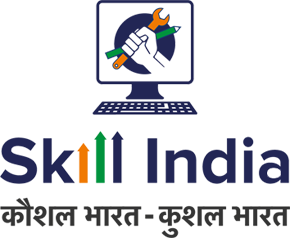



MISSION & VISION
- The main aim of ITI is to provide employment to weaker sections of the society. Most of the skill training programmes are too costly to afford and lengthy in terms of duration besides requiring higher educational qualifications. Easing these conditions, ITI is basically designed to offer skills to those who cannot afford expensive training.
- It caters the need of those who didn’t get a chance for higher education. That is the reason that the minimum educational qualification for admissions in ITIs is matric, high school or intermediate. It is also a suitable alternative for those, who are inclined to technical education or who wanted to earn at an early age.
- Schemes like PPP(Public Private Partnership), World Bank and Domestic Funding are aimed to improve the infrastructure and standard of organizations and institutes. The same is being applied in some of the ITI’s where one of the trade is taken as CoE (Centre of Excellence) with state of the art facilities. The students are exposed to related latest machinery and softwares which help them gain quality education. The selection of trades in CoE is done according to the local requirement of the region that increases the employment possibilities in the local or adjoining regions. This is mainly helpful for girls as they are reluctant to move to far away places for a job.
- ITI is one of the vocational training institutes in India whose NCVT certificate is recognized throughout world as it is certified by ILO (International Labour Organization). So the workers can apply anywhere globally on the basis of this certificate. In India , government is its being contemplated to make mandatory for industries to employ only the ITI certified workers. This will increase the employment chances to a larger extent.
- The ITIs arrange for the campus interviews of students from different streams. Barring a few students, most of them get selected by the companies.
- Even the timings for study are of eight hours per day in accordance with the factory rules. This way the industries don’t have to waste their time and money in training workers. The advantage of this work-based policy is that after completing the training, the students easily get absorbed in the factory atmosphere and are more productive.
- Every batch consists of 16 to 21 students only, thus, guarantee the students to receive full attention during training.
- The students have a broad field of trades to choose from depending upon their interest. At present, there are approximately 300 trades being run by ITls for technical and non-technical sectors and the number of trades is continuously increasing with time.
- One more reason that makes ITI successful is that the medium of teaching is optional and the student could take the exam in either English or Hindi. As English is not our mother tongue, many people face difficulty in expressing themselves in this language. Thus, the language barrier doesn’t impede the growth of students in ITI’s. What matters here the most is the skill of the person.
Jobs Available for ITI Certificate Holders
- Worker in industries and enterprises: There is immense requirement for skilled and semi- skilled workers in industries. Especially there are more chances for carpenter, sawyer, upholster, machinist, fitter, crane operator, mechanic, welder, turner, plumber, electrician, tool &die maker, mason, draftsman, maintenance mechanics (dairy, textile machinery etc.), patternmaker, mechanic (Tractor, Earthmover Machinery, motor vehicle), etc. who can join industries and workshops as workers. Various government and non-governmental vacancies are advertised in newspapers from time to time. The main job providers are Railways, Army, Police, Para-Military Forces and other departments.
- Salary: The Salary of different workers in government sector lies in pay band-1 with the difference of only the grade pay. Usually skilled labour gets a salary according to pay band-1 (Rs 5200-20,200; grade pay-Rs 1900) and semi- skilled staff are paid a grade pay of Rs 1800. In battalion, head constable (motor mechanic etc.) receives a grade pay of Rs.2400 and constable (driver, mechanic etc.) has a grade pay of Rs.2000 in the same pay band-1. In private industries, the workers get salary according to company’s level and its policies.
- Office work: Jobs can also be found in various agencies, government departments, research organizations etc. as stenographer, computer operator [Trade: Stenography (Hindi/English), COPA (Computer Operator and Programming Assistant), company secretariat etc.], where grade pay upto Rs.2400 can be received. These are jobs involving general office works like typing, shorthand etc.
- Teaching: Instructors are the vital organ for any organization. It is difficult to imagine schools, educational institutions, without teachers/trainers/faculty/instructors. After completing basic course of ITI training, the person can go for advance training courses (CTS/POT), which is prerequisite for becoming instructor in Government institutions. The pay band for instructors is (9300-29,000) with grade pay 4200. Now a days, under the policy of increasing the number of ITIs’ private sector is being encouraged to open private ITIs / ITCs (Industrial Training Centre). That is again creating jobs for instructors. In private ITIs’, a person get some consolidated amount according to the skill and demand.
- Self-employment: If one is not interested in doing a job he/she can opt for self employment. Students of “Cutting & Sewing” trade can open tailor shop on small level and can even start their own production house on larger level. Students from “Hair and Skin care” trade can open their beauty parlors. Electricians, plumbers can start their repairing workshops. Motor mechanics can open their garages. Carpenters, fitters, can start their own shops or can work on daily wages. Almost all the banks have certain schemes for providing loans to such needy persons at low interest rates. Some of the suitable trades are baker & confectioner, fruit & vegetable processor, leather crafts trades (leather goods maker, footwear maker), photographer, health & slimming assistant, textile trades (weaver, knitter, printing knitter), hair dresser, dress designing, health & slimming assistant, desktop publishing operator etc. Self employment could fetch good income based on individual skills. These trades and people associated with them are gaining more importance and due recognition with time. Even the foreign countries are looking towards India for their requirement of skilled manpower.